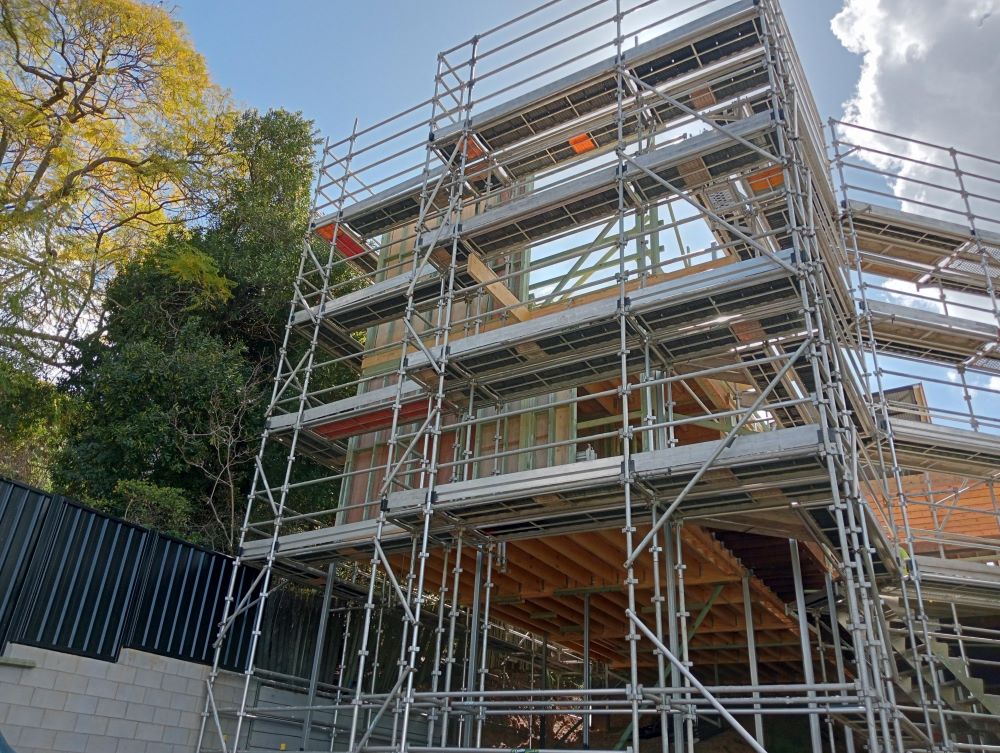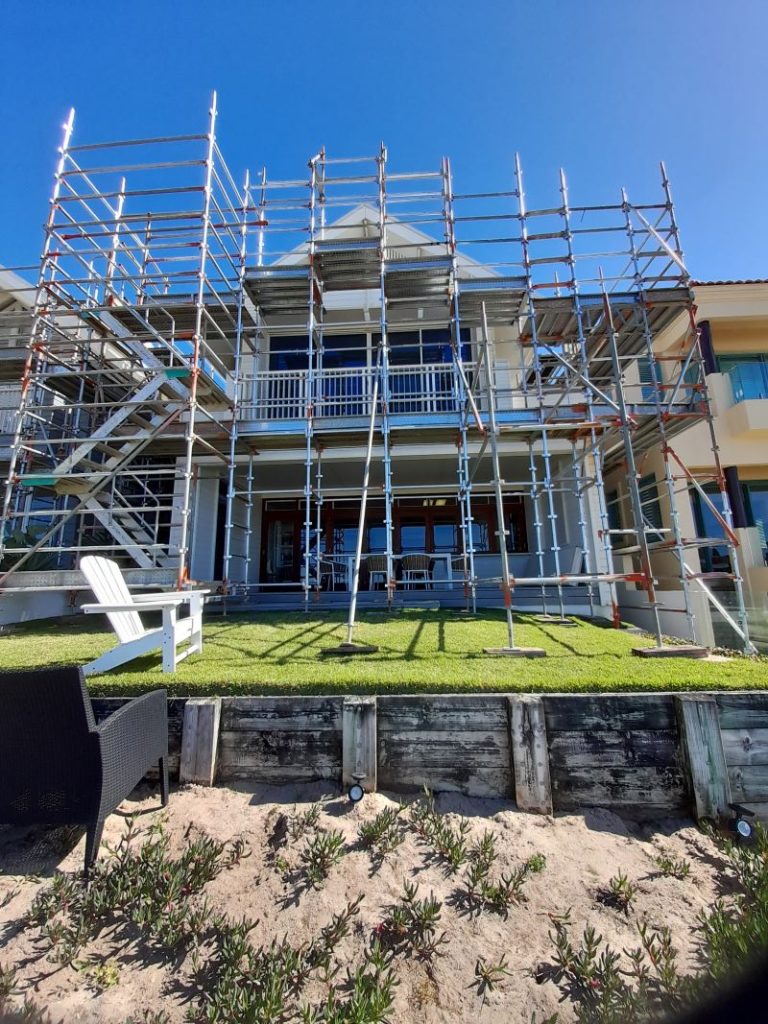Comprehensive Guide to Choosing Between Aluminium and Steel Scaffolding for Your Construction Projects
Choosing the right scaffold for your construction or renovation project is vital to ensure both safety and efficiency. Among the leading materials in this sector are aluminium scaffolding and steel scaffolding. Each material possesses distinct characteristics, advantages, and ideal applications tailored to various project requirements. This extensive guide aims to provide an in-depth comparison of these two scaffolding options, highlighting their features, benefits, and suitability for different scenarios, ultimately guiding you to select the most appropriate scaffold for your specific needs.
When evaluating scaffolding options, it's essential to understand the unique benefits of aluminium and steel scaffolding. We will delve into these attributes comprehensively, equipping you with the necessary knowledge to make an informed decision that aligns with your project’s specific demands and operational challenges.

Maximize Efficiency with the Benefits of Aluminium Scaffolding for Your Projects
Aluminium scaffolding is widely recognized for its lightweight construction and exceptional ease of handling, making it an ideal choice for projects that demand frequent relocation and rapid assembly. The components of aluminium scaffolding are significantly lighter compared to those made from steel, enhancing both transportation and maneuverability at the work site. This feature proves especially advantageous for contractors working in tight spaces or those who need to reposition scaffolding materials regularly, ensuring a seamless workflow and increased project efficiency.
Moreover, aluminium scaffolding boasts impressive corrosion resistance. This quality makes it particularly suitable for outdoor projects or environments where high humidity is a concern, ensuring that the scaffold maintains its structural integrity and visual appeal over time. The corrosion-resistant nature of aluminium scaffolding contributes to its long-lasting performance and reliability, which is critical for projects exposed to harsh weather conditions or moisture.
Setting up and dismantling aluminium scaffolds is typically a quick and hassle-free process, as the components are designed for effortless assembly. This ease of use can lead to substantial time savings on-site, especially for projects with stringent deadlines. By minimizing the time spent on setup and breakdown, construction teams can allocate more focus to completing their tasks effectively and safely, thus enhancing overall productivity and job site performance.
Uncover the Strength and Durability of Steel Scaffolding for Heavy-Duty Applications
Steel scaffolding is renowned for its superior strength and significant load-bearing capacity, making it a highly durable option for construction projects that require robust support. This material is specifically engineered to handle substantial weight and endure demanding conditions, providing a secure platform for workers, even in challenging environments. Its rigidity and overall strength render it the preferred choice for projects involving heavy machinery or substantial materials, ensuring safety and reliability at elevated heights.
The durability of steel scaffolding serves as a considerable advantage, particularly in extreme weather scenarios or high-traffic areas where the scaffold may be subjected to intense usage. Unlike lighter alternatives, steel scaffolding is crafted to resist bending or deformation, ensuring a stable working environment for personnel. This dependability fosters confidence and a sense of safety among construction teams, allowing them to perform their tasks with peace of mind.
Furthermore, steel scaffolding is recognized for its cost-effective longevity. Although the initial investment may be greater compared to aluminium, the durability and extended lifespan of steel scaffolding make it a financially prudent choice over time. This material is capable of withstanding repeated use, leading to fewer replacements or maintenance needs, thus resulting in significant cost savings in the long run.
When contemplating the decision between aluminium and steel scaffolding, it's vital to evaluate the specific requirements of your project. Factors such as material weight, scaffold height and size, and the environmental conditions at the job site will greatly influence your ultimate choice.
Consulting with your scaffold hire company can yield essential insights, guiding you in selecting the most appropriate option for your project's unique demands. For additional details on when scaffolding is necessary and the types of projects that may require it, refer to our article on when to hire scaffolding.
Essential Factors to Consider for Selecting the Best Scaffold Material
When evaluating the choice between aluminium and steel scaffolding, several critical factors must be taken into account. A thorough understanding of each scaffold material's strength and durability, weight and portability, and cost and affordability will empower you to make a well-informed decision that aligns with your project's specific needs and constraints.
Evaluating the Strength and Durability of Scaffolding Materials for Your Projects
Both aluminium and steel scaffolds are recognized for their strength and durability; however, they feature distinct properties that may influence your choice. Steel scaffolding is generally acknowledged to possess superior strength and load-bearing capacity compared to its aluminium counterpart. The robust composition of steel enables it to endure heavy loads while ensuring stability in challenging construction scenarios, making it an essential choice for demanding applications.
Conversely, aluminium scaffolds, while strong and durable, may not support exceptionally heavy loads as effectively. Thus, it is crucial to evaluate your project's weight requirements carefully to ascertain which scaffold material best meets your operational needs and safety standards. A tailored approach to this evaluation will ensure the safety and efficiency of your construction activities.
Examining Weight and Portability Attributes of Scaffolding Options
Aluminium scaffolds have a significant advantage in terms of weight and portability. Their lightweight design facilitates much easier handling and transportation compared to their heavier steel counterparts. This feature is particularly beneficial in smaller-scale projects or scenarios where scaffolding must be repositioned frequently, as it reduces physical strain on workers and enhances overall productivity on the job site.
While steel scaffolds may be heavier, they still offer a degree of portability; however, they typically demand more effort and manpower for transportation. Understanding the relevant weight and portability aspects of your project will help ensure efficient and safe scaffold use throughout your operations, leading to improved job site dynamics and overall workflow.
Unlock the Unique Advantages of Aluminium Scaffolding for Your Construction Needs
Upon analyzing various scaffold materials, aluminium scaffolding emerges with a variety of unique advantages that make it a preferred choice for numerous construction and renovation projects.
Harness the Benefits of Aluminium Scaffolding’s Lightweight Design for Effortless Handling
A prominent advantage of aluminium scaffolding is its lightweight design. Compared to steel scaffolding, aluminium is considerably lighter, which enhances manageability and transportability. This characteristic not only accelerates the assembly and disassembly processes but also contributes to a more efficient workflow, ultimately reducing the overall project timeline. Furthermore, the ease of handling significantly boosts worker productivity, mitigating the risk of fatigue-related accidents and improving overall safety on site.
Benefit from Exceptional Corrosion Resistance for Long-lasting Performance
Aluminium scaffolding showcases remarkable corrosion resistance, making it a prime choice for diverse environmental conditions. Unlike steel, which is vulnerable to rust and deterioration, aluminium's natural resistance to corrosion ensures it retains its structural integrity even when exposed to moisture or outdoor elements. This feature proves particularly advantageous for projects conducted in damp or humid conditions, guaranteeing that the scaffold remains safe and effective throughout its entire duration of use.
Enhance Efficiency with Quick Assembly and Disassembly Processes
Another significant advantage of aluminium scaffolding lies in its quick assembly and disassembly capabilities. The lightweight components, user-friendly connectors, and locking mechanisms facilitate a streamlined setup process. This efficiency is especially valuable for time-sensitive projects or when scaffolding requires frequent relocation. The rapid assembly and disassembly associated with aluminium scaffolding not only saves time but also helps to lower overall labour costs, providing an economic edge for project managers aiming to optimize their resources effectively.

Discover the Unmatched Benefits of Steel Scaffolding for Your Construction Projects
Steel scaffolding offers a multitude of advantages that make it a leading choice among contractors and builders when determining the optimal scaffold for their construction projects.
Experience Exceptional Strength and Load Capacity with Steel Scaffolding
One of the primary benefits of steel scaffolding is its unparalleled strength and load capacity. Steel is renowned for its remarkable durability and ability to support significant loads, making it perfect for projects where scaffolding must bear heavy weights. Steel scaffold systems are meticulously engineered to provide workers with a stable and secure platform, ensuring their safety while operating at elevated heights and in challenging environments.
Achieve Remarkable Durability in Harsh Environmental Conditions
Steel scaffolding is resilient against a variety of environmental challenges, making it suitable for extreme conditions. It can withstand harsh weather elements, including high winds, heavy rainfall, and extreme temperature fluctuations. This durability guarantees that the scaffold remains stable and secure, establishing a safe working environment for construction teams. Whether addressing projects like gutter replacements or other tasks that require scaffolding in demanding conditions, steel scaffolding is crafted to endure the rigours of the job.
Unlock Cost-Effective Longevity with Steel Scaffolding
Steel scaffolding is widely acknowledged for its exceptional longevity and overall cost-effectiveness. Its inherent durability ensures that the scaffold can withstand numerous construction projects over extended periods. Unlike other materials, steel scaffolding does not degrade quickly, which minimizes the need for frequent replacements or repairs.
To determine the most suitable scaffold material for your specific project, it is essential to assess your needs thoroughly, consult with industry professionals, and take into account safety standards as well as budgetary constraints.
Crucial Steps for Selecting the Ideal Scaffold for Your Construction Project
Choosing the right scaffold for your project involves a meticulous assessment of your unique requirements. By thoroughly evaluating your project needs, consulting with professionals, and considering both safety and budget constraints, you can make a well-informed decision that aligns with your operational goals and enhances project efficiency.
Thoroughly Assessing Your Project Requirements for Optimal Scaffold Selection
Begin by evaluating the specifics of your project and the tasks that necessitate scaffold support. Key considerations include the structure's height and configuration, the anticipated duration of the project, and any specialized requirements that may arise.
For instance, scaffolding for an apartment complex will have distinct specifications compared to scaffolding or guard rails for gutter replacement. A comprehensive understanding of your project needs will enable you to determine the appropriate type and configuration of scaffold that best meets your operational objectives, ensuring safety and efficiency on-site.
The Importance of Engaging Professionals for Informed Scaffold Selection
Consulting with experts, such as Cando Scaffolding, is highly advisable when navigating the complexities of scaffold selection. Our extensive industry experience guarantees you valuable guidance, helping you adhere to safety standards and regulatory requirements throughout your project.
Contact us today or request a quote to commence selecting the perfect scaffold tailored to your project’s specifications.
The post-Scaffold Choices: Aluminium vs Steel for Your Project appeared first on https://writebuff.com/.
The Article Aluminium vs. Steel: Choosing the Best Scaffold for Your Project Was Found On https://limitsofstrategy.com



Comments are closed